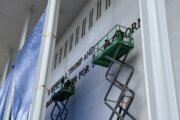If you’ve recently been diagnosed with breast cancer, you’ll be faced with some decisions about the care you’ll receive. Depending on the type, location, stage and other aspects of your cancer, you may have the option to undergo a lumpectomy procedure. The Mayo Clinic defines a lumpectomy as “surgery to remove cancer or other abnormal tissue from your breast.” Lumpectomy is sometimes referred to as breast-conserving surgery, partial mastectomy or wide local excision because only a piece of the breast is removed, not the entire breast as with a mastectomy.
Your doctor should explain in detail the approach he or she takes when performing a lumpectomy, but the process for removing a cancerous or suspected cancerous growth from the breast is well-established. Despite the recent uptick in patients choosing a mastectomy, lumpectomy is still “the most common procedure,” says Dr. Mary Gemignani, attending surgeon at Memorial Sloan Kettering Cancer Center and the program director for surgical fellowship. During a lumpectomy, “we take out the cancerous tissue plus a perimeter of healthy cells. This surgery preserves the breast, and is often followed by radiation therapy” to prevent the cancer from returning, she says.
[See: 10 Seemingly Innocent Symptoms You Shouldn’t Ignore.]
Before Surgery
Prior to the lumpectomy, you’ll meet with your surgeon to discuss what’s to come. Some women are administered chemotherapy, endocrine therapy or radiation treatments prior to the lumpectomy to shrink the tumor, but this doesn’t happen for everyone.
If your tumor is palpable, meaning it can be felt or seen, the surgeon may not need additional imaging, and the doctor or a nurse may mark your skin where the incision is to be made with a felt tip marker.
Patients with a less obvious tumor may need additional imaging or have a procedure called a radioactive seed localization to help the surgeon find the tumor. Gemignani says in these cases, she implants a “radioactive seed a few days before the surgery” in the breast at the site of the tumor. The seed is a small, metal pellet, and a sterile Geiger counter can then be used in the operating room to locate the radioactive seed and hence the tumor. The radioactive seed is removed with the tissue.
In other cases, the doctor conducts a wire-localization, in which a very thin wire is inserted into the breast at the site of the tumor. This wire is then used as a guide to find the tumor during surgery. The wire will be removed during surgery. Using a similar principal, your doctor may implant a radio-opaque clip during a needle biopsy. You won’t be able to feel the tiny clip that gets left behind in this technique, but it helps the doctor find the tumor again during surgery. All of these techniques, Gemignani says, “give them a road map to the [tumor] if they can’t feel it.”
During Surgery
Breastcancer.org reports that most patients undergoing a lumpectomy are administered a local anesthetic to numb the area. They will also be given a sedative to relax them during the procedure. Fewer patients are given a general anesthetic, but those who are will be asleep for the entire procedure.
A lumpectomy is generally a quick procedure. Breastcancer.org says patients should expect it to take 15 to 40 minutes and for the surgeon to use “an electric scalpel that uses heat to minimize bleeding (an electrocautery knife). Most surgeons use curved incisions (like a smile or a frown) that follow the natural curve of your breast and allow for better healing.” A rubber tube to drain excess fluid that can build up during the procedure may also be inserted into the breast, but will be removed before the surgery is completed.
In addition to the tumor, your surgeon also will be careful to excise a perimeter of healthy cells around it. This is called a “clean margin,” and knowing exactly where to draw the line for that margin requires “expertise. There’s an art to doing the lumpectomy,” says Gemignani, and it’s generally easier to get a clean margin with a palpable tumor. “If something is palpable and the surgeon can feel what’s cancerous tissue, they can then take the rim of normal tissue around that,” she says.
Getting a clean margin around a non-palpable mass is more challenging, and Gemignani says experience is the best guide in knowing where to cut. Still, the surgeon can’t be 100 percent certain that she’s removed all the cancerous cells while she’s performing the lumpectomy. “When you’re done and it goes to pathology, you have a good idea but you don’t know that you’ve got clean margins. After the tissue goes to the pathologist, they look at the cut edges to make sure there’s no tumor,” cells at the edge of the excised tissue.
[See: Breast Pain? Stop Worrying About Breast Cancer.]
The whole point in getting a clean margin is to try to minimize the need to go back in to do additional surgery. “When patients are recommended to have additional surgery, that can cause a lot stress and possibly affect the cosmetic outcomes,” Gemignani says, but it happens frequently. A 2012 study published in JAMA found that nearly 23 percent of all lumpectomy patients end up having subsequent surgery because cancer cells were found at the edge of the removed tissue.
Depending on your diagnosis, your surgeon may also remove some nearby lymph nodes, which will then be tested to see if the cancer has spread. This is called a sentinel node biopsy. Dr. William Farrar, professor of surgery at The Ohio State University Wexner Medical Center and director of the comprehensive breast center, says that typically, two to three lymph nodes are removed during this procedure. Depending on the results of this testing, you may need additional surgery. “The sentinel lymph node sort of dictates what we do,” Farrar says. “If you have more than two positive lymph nodes, more often than not we go back and take them all,” he says, and you may also undergo additional treatments. According to Breastcancer.org, you can have anywhere from 5 to 30 lymph nodes under each arm, and each person has a different distribution of lymph nodes that could be involved.
Once the tumor and any other tissue has been removed, the surgeon will suture the incision and you’ll be bandaged and sent to the recovery room. How long you’ll be in the hospital will depend on whether lymph nodes were removed and your body’s reaction to the surgery, but many patients can be discharged later that same day or the next day.
After Surgery
Upon completion of the surgery, the tissue will be tested to confirm the diagnosis and to help your care team determine any additional treatment protocols that should be initiated. Some patients will have radiation therapy or chemotherapy after a lumpectomy. Others may begin taking tamoxifen or another endocrine therapy. You may be prescribed a combination of therapies, and these next steps will all depend on the type, stage and individual characteristics of your cancer.
Potential Complications
Lumpectomy procedures are less invasive than mastectomy, but they still carry some risks, including pain, swelling and bruising. Infection at the incision site is the primary concern, as any surgical incision could become infected under the right circumstances.
[See: What Not to Say to a Breast Cancer Patient.]
If your doctor removes lymph nodes as part of your lumpectomy, you will also be at risk for developing lymphedema, a painful buildup of lymph fluid in the arms that affects about 15 to 20 percent of patients who’ve had breast cancer surgery. “It’s hard to predict who will get it,” Gemignani says. Although it can be a painful, long-term side effect of surgery, there are “prevention strategies and strategies for physical therapy” to deal with lymphedema if it does arise, she says.
After the surgery, the shape of your breast will likely be different than it was before because a potentially substantial portion of tissue has been removed. You may also experience some visible scarring. The Susan G. Komen organization reports that the breast will be “smaller and firmer,” and some women experience numbness in the tissue that’s left behind because the nerves have been severed. In some cases, the patient may opt to have the breast reconstructed, either by inserting an implant or injecting fat from elswehere in the body into the breast, and this can be done either at the time of the lumpectomy or after a period of healing. This additional procedure may improve the cosmetic outcome of the lumpectomy, but it is an additional surgery that carries risks of its own, and it will likely only increase the loss of sensation in the breast.
More from U.S. News
Breast Pain? Stop Worrying About Cancer
10 Seemingly Innocent Symptoms You Shouldn’t Ignore
What Not to Say to a Breast Cancer Patient
What Happens During a Lumpectomy? originally appeared on usnews.com







